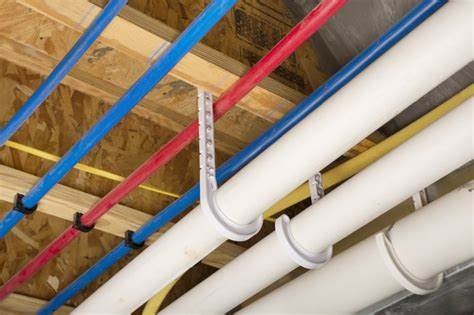5 Tips To Install Gas Pipes At Your Building In Mira Mesa

Installing gas pipes in your building requires careful planning, adherence to safety standards, and precise execution. Gas is a valuable resource but can be hazardous if not handled properly. Whether you’re renovating your home or constructing a new building, here are five essential tips to ensure a safe and efficient gas pipe installation process:
-
Obtain Permits and Inspections
Before starting any installation work, it’s crucial to obtain the necessary permits from your local authorities. Permits ensure that your installation complies with building codes and safety regulations. Additionally, schedule inspections at key stages of the installation process to verify compliance and address any potential issues promptly. Failure to obtain permits or undergo inspections can result in serious safety hazards and legal consequences.
-
Conduct Proper Sizing and Layout
Proper sizing and layout of gas pipes are essential for efficient and safe gas distribution throughout your building. Consult with a qualified engineer or gas professional to determine the appropriate pipe size based on the gas load and distance from the source. Consider factors such as pressure requirements, flow rates, and the number of appliances connected to the gas line. Additionally, plan the layout of the pipes to minimize bends, joints, and potential obstructions, ensuring optimal gas flow and accessibility for maintenance.
-
Use High-Quality Materials and Components
Invest in high-quality materials and components for your gas pipe installation to ensure durability, reliability, and safety. Choose pipes made of corrosion-resistant materials such as steel or flexible copper tubing for indoor installations. Use approved fittings, valves, and connectors that are compatible with the type of gas being used (e.g., natural gas or propane). Avoid using inferior or substandard materials, as they can compromise the integrity of the gas system and increase the risk of leaks or failures.
-
Employ Proper Installation Techniques
Follow recommended installation techniques and best practices to ensure a secure and leak-free gas pipe system. Use appropriate tools and equipment for cutting, threading, and joining pipes, and follow manufacturer guidelines for assembly and installation. Pay close attention to proper sealing of connections using approved thread sealants or fittings to prevent gas leaks. Conduct pressure tests after installation to verify the integrity of the system and address any leaks before putting it into service.
-
Prioritize Safety Measures
Safety should always be the top priority when working with gas pipes. Implement proper safety measures, such as wearing protective gear, including gloves and safety glasses, when handling pipes and equipment. Ensure adequate ventilation in the work area to prevent the accumulation of gas fumes. Use gas detectors or sniffers to detect any leaks during and after installation. Educate yourself and your team on emergency procedures and evacuation routes in case of a gas leak or other hazardous situation.
FAQs
Can I Install Gas Pipes In My Building Myself, Or Do I Need To Hire A Professional?
While DIY installation of gas pipes is possible for individuals with the necessary skills and knowledge, it’s generally safer and more advisable to hire a licensed professional. Gas pipe installation requires expertise in handling potentially hazardous materials and complying with complex regulations to ensure safety and legality.
What Are The Common Signs Of A Gas Leak, And What Should I Do If I Suspect A Leak In My Gas Pipes?
Common signs of a gas leak include a distinctive sulfur-like odor, hissing sounds near gas appliances or pipes, and dead vegetation or bubbles in standing water. If you suspect a gas leak, immediately evacuate the premises, avoid using any sources of ignition, such as light switches or appliances, and contact your gas provider or emergency services.
How Often Should I Schedule Maintenance For My Gas Pipe System, And What Does It Involve?
It’s recommended to schedule annual maintenance inspections for your gas pipe system by a qualified professional. Maintenance typically involves checking for leaks, inspecting connections, verifying pressure levels, and ensuring the overall integrity of the system. Regular maintenance helps prevent potential issues and ensures the continued safe operation of your gas appliances.
Proper installation of gas pipes is essential to ensure the safety, efficiency, and reliability of your building’s gas supply. By following the tips outlined above and prioritizing safety measures, you can mitigate the risk of hazards such as leaks or failures. Remember to obtain permits, conduct proper sizing and layout, use high-quality materials, employ correct installation techniques, and prioritize safety throughout the installation process. Additionally, staying informed about common gas pipe-related issues and adhering to regular maintenance schedules will help keep your gas system in optimal condition for years to come.
Conclusion
Contact us today at (858) 567-0544, and Courtesy Plumbing will get you!


Leave a Reply
You must be logged in to post a comment.